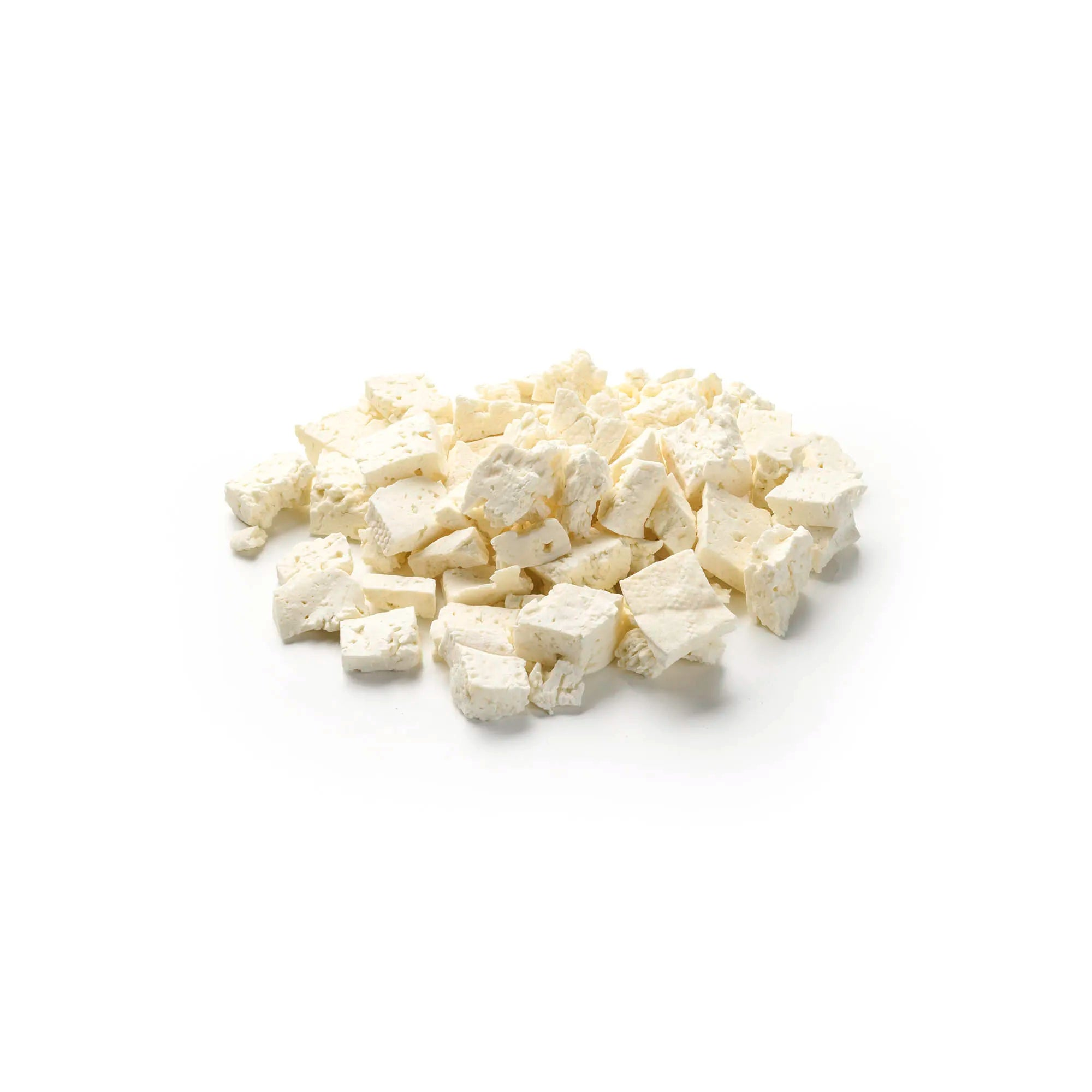
Therapy dogs - How does my dog become a therapy dog?
Share
Most dog lovers will have long since realized that dogs have a positive influence on us humans. They are now being used in a wide variety of therapies and are showing promising results. It doesn't matter which form of therapy is used. The results speak for themselves, because it has been proven that they can help lower blood pressure and stress levels. But how can dogs be trained to be therapy dogs and which dog breeds are actually suitable for this?
Content: Therapy dogs
- Visiting, assistance and therapy dogs
- Areas of application
- How a therapy dog works
- The right working environment
- Possible successes
- The training
- Dog breeds with potential
- The costs
- Conclusion
High quality dog snacks to pamper your dog, now available!
Visiting, assistance and therapy dogs
First of all, we must differentiate between the different tasks in which dogs are used. Therapy dogs cannot be compared with assistance or visiting dogs. The assistance dog, for example, is used to support people with disabilities and lives with them. This is why they are also referred to as companion dogs. The best-known example of this is the guide dog. A visiting dog is used without a therapeutic goal and to promote social contacts, but is not permanently with the patient. This is the case with the therapy dog, which usually lives and grows up with the therapist. Its job is to work with the patients in hospitals, retirement homes or special education facilities on a therapy plan in a targeted manner and over several weeks. Its areas of application are astonishingly diverse and so it is used in many areas. Their presence alone can be helpful for mentally ill people as well as for neurological diseases. They have amazing abilities and can have a proven positive influence on the healing process by naturally seeking closeness or encouraging play. Even if they do not replace a therapist, they are still immensely helpful in therapeutic work. See also: Petting a dog
Where are therapy dogs used?
Since the positive effects of dogs in therapy have now been scientifically proven, they can be found in all possible areas of therapeutic work. They are used to treat depression , anxiety and learning disorders, speech problems or other mental, physical and neurological illnesses.
The specialist areas are:
- psychotherapy
- Occupational therapy
- Learning therapy
- Speech therapy
- physical therapy
- Special Education
What does the work of a therapy dog look like?
A distinction is made between active and reactive therapy dogs. The former are active and encourage patients to interact, while reactive dogs are passive and respond to the patients' needs with a lot of empathy. The type of therapy does not play a major role and both individual and group therapy is possible. Always accompanied by their owner, usually the therapist, they help people in a wide variety of life situations. And often in situations that can be extremely stressful for the dog itself, for example in hospitals. Despite this, they manage to respond to a wide variety of people and help them individually.
Reward your dog with our high-quality chew products!
The right working environment for therapy dogs
Working conditions are incredibly important to keep the dog's stress level low. To avoid being overwhelmed, therapy dogs also need times when they can just be dogs. Therapeutic work should be seen as an addition to a dog's normal life and should not be equated with a working person's 40-hour week. Quite the opposite. Experts recommend a maximum working time of two hours per day, but this depends largely on the dogs themselves. For some, two hours is already too much. A good work-life balance is also important for four-legged friends! After all, a sick dog can hardly help other people to get well again. Occasionally, several therapy dogs are used, who share the work.
Possible successes
The success of assistance dogs in therapy is astonishing and has now been scientifically proven. It has been proven that the mere presence of a dog not only reduces stress, but can also lower blood pressure and reduce insecurities or aggression. We probably like petting dogs (and cats, of course) so much because our bodies release the hormone oxytocin. This hormone not only makes us more empathetic and calm, but also happier. But there is much more that makes dogs so valuable for therapy.
Many therapeutic measures also depend on interpersonal processes and often it is less about specialist knowledge and well-intentioned advice than about empathy and sensitivity - and even if this may seem strange to some, dogs are particularly good at this, if not better than humans. While in human-to-human therapy, some patients subjectively perceive that they are ultimately categorised as sick and pitiful, with dogs they do not feel exposed to any prejudice. They are accepted as they are and do not feel any expectations or pressure. While human therapists sometimes need a lot of time to get through to a patient, dogs sometimes create a connection in no time and elicit the first smile in a long time from the affected person. Many patients begin to open up again in this way. A positive effect can often be seen in both physiological and psychological illnesses.
These include:
- Emotional empowerment
- Reduce aggression and fear
- Relax muscles
- Stress reduction
- Lower blood pressure and pulse rate
- Promote body awareness
- Improve your sense of balance
- Reduce perceptual disorders
- Promote communication
- Improve language skills
- Increase attention
- Increase self-esteem
- Improvement of memory, reaction and concentration skills
- Improve performance
Discover our selection of premium dog chews!
The training
There is no universally valid path to training as a therapy dog and dog therapist. There are various providers on the market and the costs and requirements vary. However, an aptitude test for both humans and dogs is the rule. The training itself is offered in seminars, which are often available in different models. Before training can begin, reputable providers insist on a temperament test. This is elementary and without successfully completing it, the dog will probably not be trained as a therapist. Dogs are often trained by tradition. In this process, they learn from dogs that have already been trained.
In order for the dog and the human to work as a team, both are trained, not just the four-legged friend. For the human, this also means theory lessons in which they learn how to handle dogs. In order to convey the daily work, the training also includes a practical part in which the therapist and the dog learn to work as a team. This often involves what is known as "handing down". This is a common practice in which young dogs learn from older, already trained therapy dogs. To complete the training, there is a theoretical and practical exam at the end.
Even though in principle all dog breeds are suitable as therapy dogs, not every dog is automatically suitable. There are some breeds that are better suited than others. But what is more important is their nature and how much stress they can handle. A dog that quickly becomes irritated and barks at every opportunity can quickly be counterproductive in therapy. Instead, a therapy dog should be balanced and calm. The dog must even endure and tolerate rough treatment of patients (for example, children or people with disabilities) without any ifs or buts!
Dog breeds with potential to be therapy dogs:
Unfortunately, there are no legal requirements for the training of therapy dogs and so there are a wide variety of models. This practice does not lead to a uniform standard and it can be difficult for those interested in training to find the right path. Patients cannot always be sure that their therapy dog has received the best training.
Many different providers offer a wide range of training models. The costs and effort, as well as the entry requirements, are completely different. From weekend courses to training lasting several months, the requirements can vary enormously. For example, the minimum age of the dogs varies greatly - while some courses can be attended from 12 weeks, others require a minimum age of two years. The age of the dog can be debated, but we recommend starting therapy dog training early. However, how a weekend is supposed to be enough is a mystery to us and completely incomprehensible. It may be interesting, but if you are serious, you should give yourself and your dog enough time. A longer training course is definitely recommended!
In any case, stricter requirements and prerequisites apply to human therapists, because no one can work as a therapist without completed training or studies and two years of professional experience in therapeutic, educational, nursing or medical professions.
The costs
Most people can probably estimate how much a dog costs. However, the different types of training can increase the costs significantly. If you want a longer and more extensive training, you will need to budget around 1,500 to 5,000 euros. Since further training is usually an operating cost, it can usually be fully deducted from your taxes.
Dog tax for therapy dogs
Therapy dogs do valuable work and are indispensable in many therapeutic areas. Nevertheless, their owners often have to pay regular dog tax, as there is no special tax exemption for therapy dogs in many municipalities. In contrast to assistance dogs, which are often exempt from dog tax, therapy dog owners have to bear the same financial burdens as normal dog owners.
It is important to check with your local council about possible exemptions or discounts, as these may vary from place to place. Official recognition and exemption could not only provide financial relief, but also acknowledge the important role therapy dogs play in society.
Conclusion
Those who want to work as a therapist usually start planning to do so when they finish their school education. The right course can be set early on. The longer and more fundamental the training to become a dog therapist is, the more promising the chances of success. A short introductory course over the weekend certainly won't make you a therapy dog, and anyone who is seriously interested in this profession has to take the time and invest financially! But it can be worth it, because there is probably no better professional success than helping people to get healthy.
Pamper your dog with our delicious chews!


















